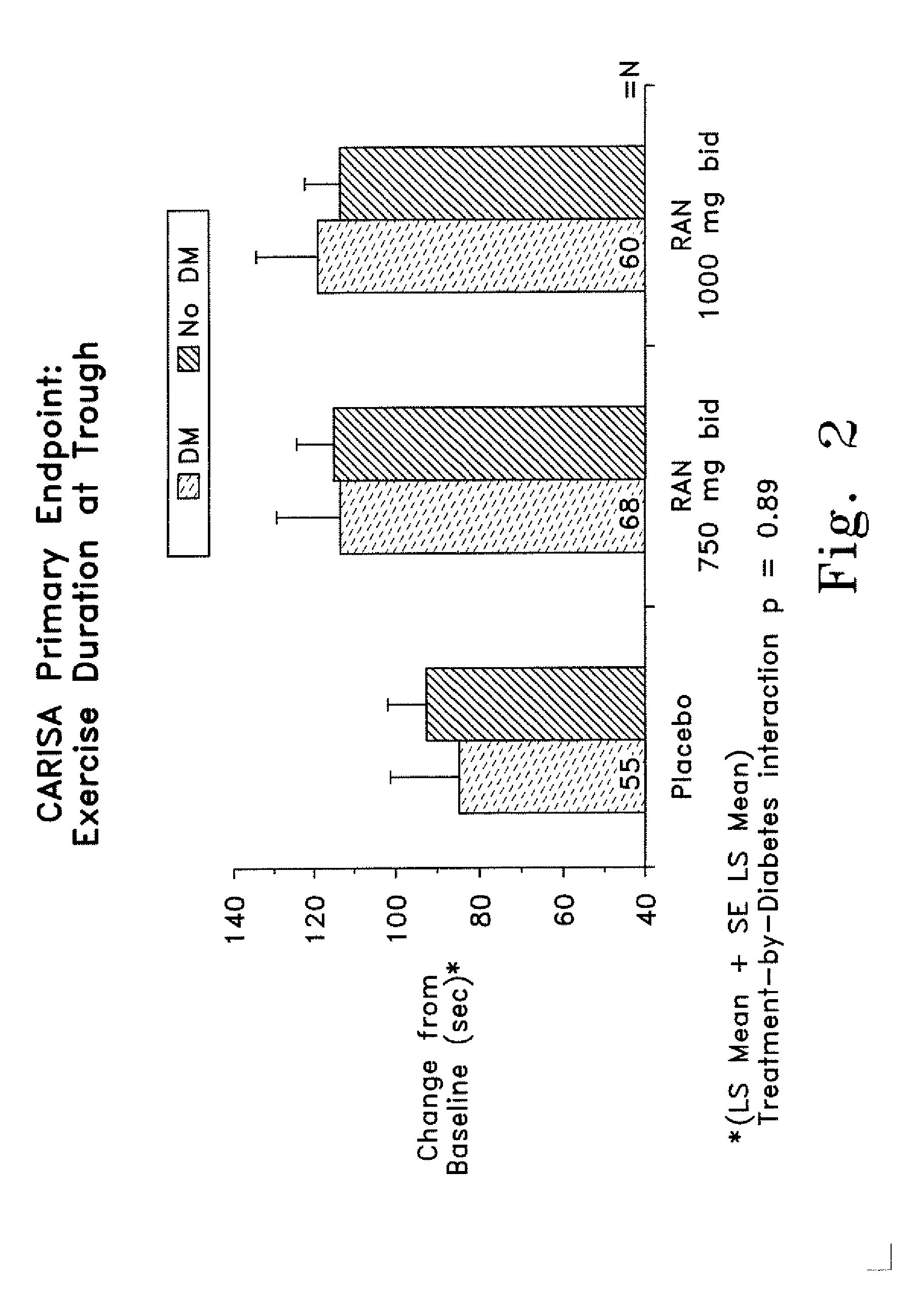Method of treating diabetes
a diabetes and treatment method technology, applied in the field of diabetes treatment, can solve the problems of increasing the risk of complications of vascular disease, increasing the public health problem of diabetes, and reducing the response of peripheral tissue to insulin, so as to achieve the effect of minimizing undesirable side effects and effective treatment of diabetes
- Summary
- Abstract
- Description
- Claims
- Application Information
AI Technical Summary
Benefits of technology
Problems solved by technology
Method used
Image
Examples
example 1
[0290]Hard gelatin capsules containing the following ingredients are prepared:
[0291]Quantity
Ingredient(mg / capsule)Active Ingredient30.0Starch305.0Magnesium stearate5.0
The above ingredients are mixed and filled into hard gelatin capsules.
example 2
[0292]A tablet formula is prepared using the ingredients below:
INGREDIENT(mg / TABLET)Active Ingredient25.0Cellulose, microcrystalline200.0Colloidal silicon dioxide10.0Stearic acid5.0
The components are blended and compressed to form tablets.
example 3
[0293]A dry powder inhaler formulation is prepared containing the following components:
IngredientWeight %Active Ingredient5Lactose95
The active ingredient is mixed with the lactose and the mixture is added to a dry powder inhaling appliance.
PUM
| Property | Measurement | Unit |
|---|---|---|
| Time | aaaaa | aaaaa |
| Mass | aaaaa | aaaaa |
| Mass | aaaaa | aaaaa |
Abstract
Description
Claims
Application Information
 Login to View More
Login to View More - R&D Engineer
- R&D Manager
- IP Professional
- Industry Leading Data Capabilities
- Powerful AI technology
- Patent DNA Extraction
Browse by: Latest US Patents, China's latest patents, Technical Efficacy Thesaurus, Application Domain, Technology Topic, Popular Technical Reports.
© 2024 PatSnap. All rights reserved.Legal|Privacy policy|Modern Slavery Act Transparency Statement|Sitemap|About US| Contact US: help@patsnap.com










